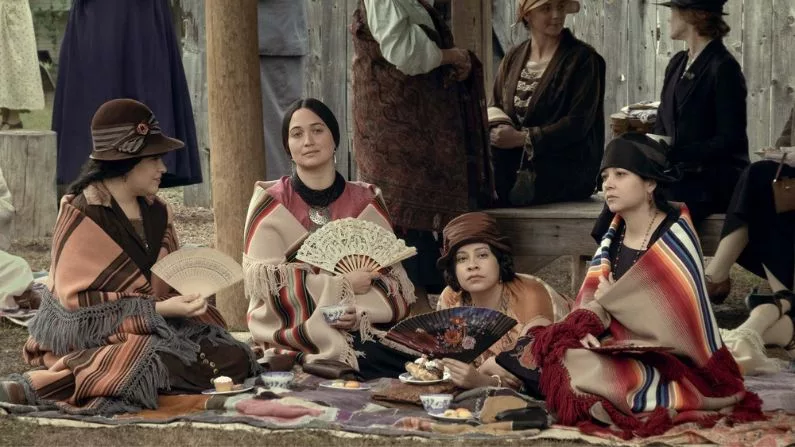One way to subdivide Martin Scorsese’s career, if you felt the purely academic need to do so, is into two broad categories – the De Niro years and the DiCaprio years. There’s overlap, of course, but former is broadly defined by “Taxi Driver”, “Raging Bull”, “Goodfellas” and “Casino”. The latter features “The Aviator”, “Gangs of New York”, “The Departed” and “The Wolf of Wall Street”. “Killers of the Flower Moon” marks the first time Scorsese will have his two favorite stars on the same project.
David Grann’s highly regarded 2017 book investigated the murders of wealthy Osage people in the 1920s. The Osage Nation had huge amounts of oil under their land and were, for a time, among the richest people per capita in North America. Many whites viewed Osage affluence as unearned and the worst of them went to grim lengths to secure it for themselves. Like the Tulsa Race Massacre of 1921, the Osage Murders were a lost, horrifying part of American history that got a “how have I never heard about this” reaction out of more people than were willing to admit it.
Film rights to the book were secured before it was published, and Scorsese and DiCaprio got on board quickly. Production was delayed by COVID and other reasons until 2021, when the bulk of the project was shot on location in Osage County, Oklahoma. That’s one of the first things you feel when you watch the film, the authenticity. The Osage people were consulted during production and their input, which apparently shifted a few of Scorsese’s original priorities, comes through loud and clear. From wardrobe to props to sets, “Killers of the Flower Moon” feels very real.
The performances at the heart of this drama are top level across the board. Lily Gladstone, in particular, seems poised to leap into the stratosphere of American actors. Her quiet, complex take on Molly is one of the film’s true treasures. She’s going to get a nomination. So is De Niro, for that matter. DiCaprio too. Leo is at his absolute best as Ernest. The character is a man of relatively few words, and fewer morals, so DiCaprio was asked to do a lot with a little. I think it’s one the best performances of his career and can’t imagine voting for anyone else on my critic’s association awards ballot in January.
For his part, Scorsese seems to have approached this film like a long-withheld passion project, even though the source material was less than a decade old. It reads like a movie he’s been dying to make his entire career. With its formidable running time, its tonal extravagance, its complete disregard for dramatic restraint, “Killers of the Flower Moon” is celebrity cinema. The kind of film only the Martin Scorsese’s of the world get to make, which is to say an indulgent, unapologetically brutal masterpiece. There are flaws here, certainly, but the totality of the experience is simply too fantastic to count them. Even if the filmmaking were weak, or the acting terrible, the historical commentary on indigenous injustice would be worth investment of time. “Killers of the Flower Moon” is huge on ambition, and equally grand in its execution.
I told a little fib earlier about this being De Niro and DiCaprio’s first joint Scorsese endeavor. They paired up once before for Marty on a comedy short in 2015. It’s called “The Audition” and, though its only mildly humorous, and very brief, it does show why these three legends (yes, I’m calling Leo one too) are so good together. “Killers of the Flower Moon” is truly a conference of giants, but the combined wattage of the stars does not blind us from the deep importance of the subject matter. We’ll be talking about this movie for years.






